Miri Zilka
Evaluating Language Models for Mathematics through Interactions
Jun 02, 2023Abstract:The standard methodology of evaluating large language models (LLMs) based on static pairs of inputs and outputs is insufficient for developing assistants: this kind of assessments fails to take into account the essential interactive element in their deployment, and therefore limits how we understand language model capabilities. We introduce CheckMate, an adaptable prototype platform for humans to interact with and evaluate LLMs. We conduct a study with CheckMate to evaluate three language models~(InstructGPT, ChatGPT, and GPT-4) as assistants in proving undergraduate-level mathematics, with a mixed cohort of participants from undergraduate students to professors of mathematics. We release the resulting interaction and rating dataset, MathConverse. By analysing MathConverse, we derive a preliminary taxonomy of human behaviours and uncover that despite a generally positive correlation, there are notable instances of divergence between correctness and perceived helpfulness in LLM generations, amongst other findings. Further, we identify useful scenarios and existing issues of GPT-4 in mathematical reasoning through a series of case studies contributed by expert mathematicians. We conclude with actionable takeaways for ML practitioners and mathematicians: models which communicate uncertainty, respond well to user corrections, are more interpretable and concise may constitute better assistants; interactive evaluation is a promising way to continually navigate the capability of these models; humans should be aware of language models' algebraic fallibility, and for that reason discern where they should be used.
Optimising Human-Machine Collaboration for Efficient High-Precision Information Extraction from Text Documents
Feb 18, 2023
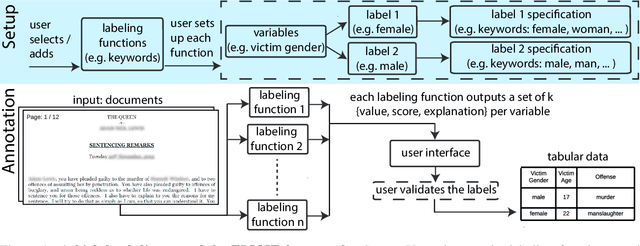
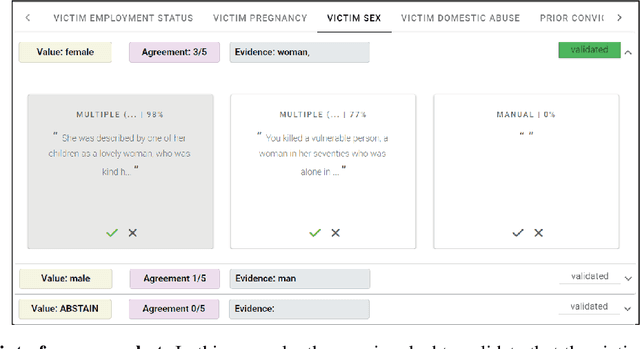
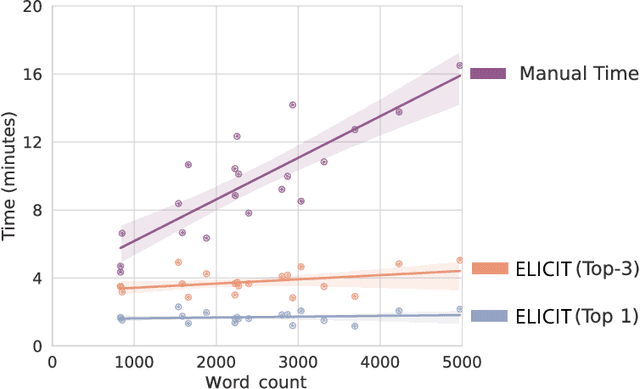
Abstract:While humans can extract information from unstructured text with high precision and recall, this is often too time-consuming to be practical. Automated approaches, on the other hand, produce nearly-immediate results, but may not be reliable enough for high-stakes applications where precision is essential. In this work, we consider the benefits and drawbacks of various human-only, human-machine, and machine-only information extraction approaches. We argue for the utility of a human-in-the-loop approach in applications where high precision is required, but purely manual extraction is infeasible. We present a framework and an accompanying tool for information extraction using weak-supervision labelling with human validation. We demonstrate our approach on three criminal justice datasets. We find that the combination of computer speed and human understanding yields precision comparable to manual annotation while requiring only a fraction of time, and significantly outperforms fully automated baselines in terms of precision.
Can We Automate the Analysis of Online Child Sexual Exploitation Discourse?
Sep 25, 2022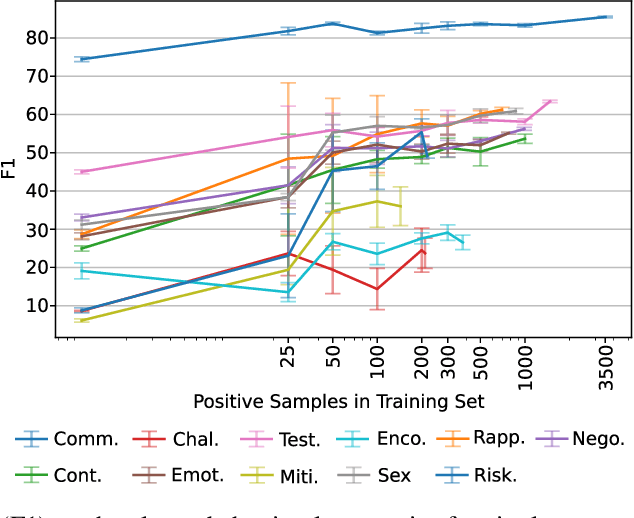

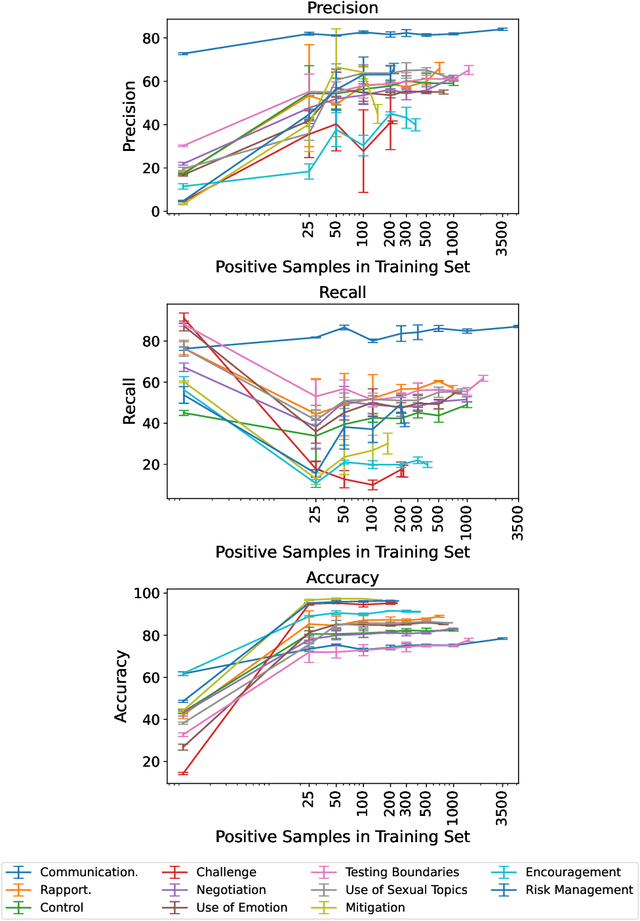

Abstract:Social media's growing popularity raises concerns around children's online safety. Interactions between minors and adults with predatory intentions is a particularly grave concern. Research into online sexual grooming has often relied on domain experts to manually annotate conversations, limiting both scale and scope. In this work, we test how well-automated methods can detect conversational behaviors and replace an expert human annotator. Informed by psychological theories of online grooming, we label $6772$ chat messages sent by child-sex offenders with one of eleven predatory behaviors. We train bag-of-words and natural language inference models to classify each behavior, and show that the best performing models classify behaviors in a manner that is consistent, but not on-par, with human annotation.
 Add to Chrome
Add to Chrome Add to Firefox
Add to Firefox Add to Edge
Add to Edge